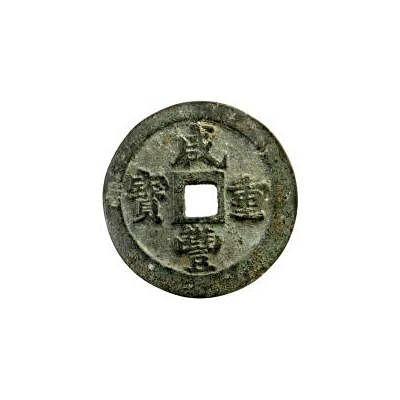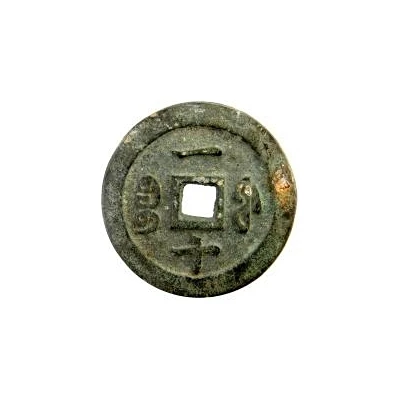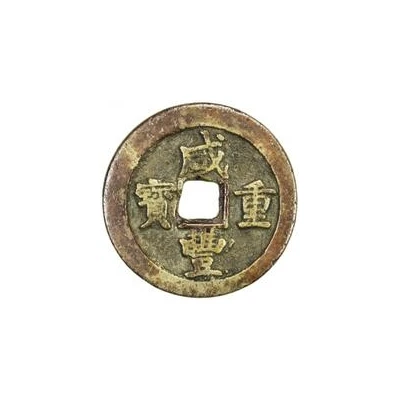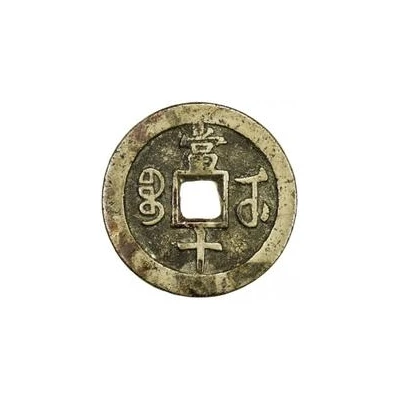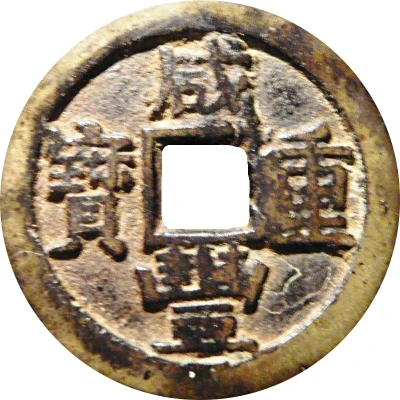
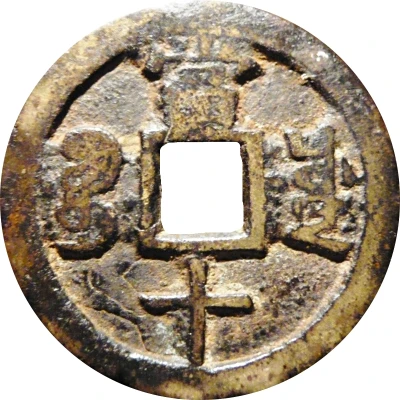

© kommodore_ss
10 Cash - Xianfeng Zhongbao; Boo-chuwan ND
| Brass | - | 35 mm |
| Issuer | Empire of China |
|---|---|
| Emperor | Qing dynasty › Xianfeng (咸豐帝) (1850-1861) |
| Type | Standard circulation coin |
| Years | 1853-1855 |
| Value | 10 Cash |
| Currency | Cash (621-1912) |
| Composition | Brass |
| Diameter | 35 mm |
| Shape | Round with a square hole |
| Technique | Cast |
| Orientation | Medal alignment ↑↑ |
| Demonetized | Yes |
| Updated | 2024-10-04 |
| Numista | N#45995 |
|---|---|
| Rarity index | 90% |
Reverse
Two Manchu words (read vertically) separated by the hole, all with one Chinese ideogram above and one below.
Scripts: Chinese (traditional, regular script), Mongolian / Manchu
Lettering:
當
ᠪᠣᠣ ᠴᡠᠸᠠᠨ
十
Translation:
Dang Shi / Boo-chuwan
Value 10 / Boo-chuwan
Edge
Plain
Interesting fact
One interesting fact about the Standard circulation coin 10 Cash - Xianfeng (Zhongbao; Boo-chuwan) ND (1853-1855) from Empire of China made of Brass is that it was designed by a French engraver named Jean-Antoine Rondel, who was hired by the Chinese government to modernize their currency. This coin was part of a series of coins introduced during the Xianfeng era (1850-1861) that were designed to replace the traditional Chinese cash coins, which were cast in iron or other metals. The use of brass for this coin was a significant departure from traditional Chinese coinage, which had historically been made from base metals like copper, tin, and lead. The introduction of this coin and others like it marked a turning point in Chinese currency and paved the way for the eventual adoption of modern coinage in China.
